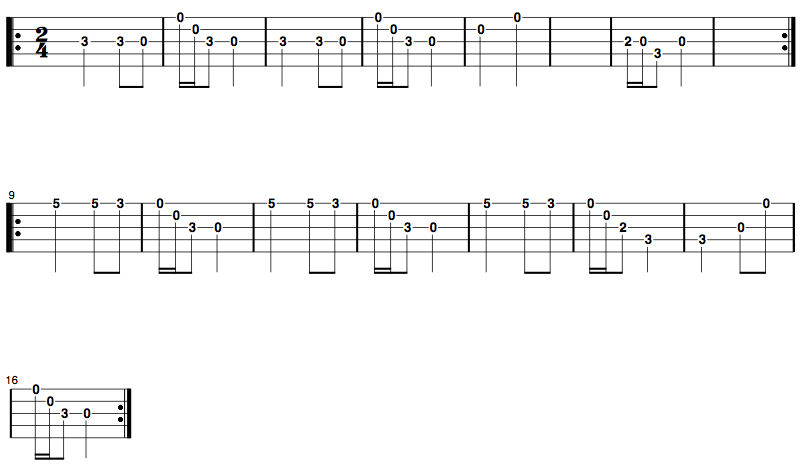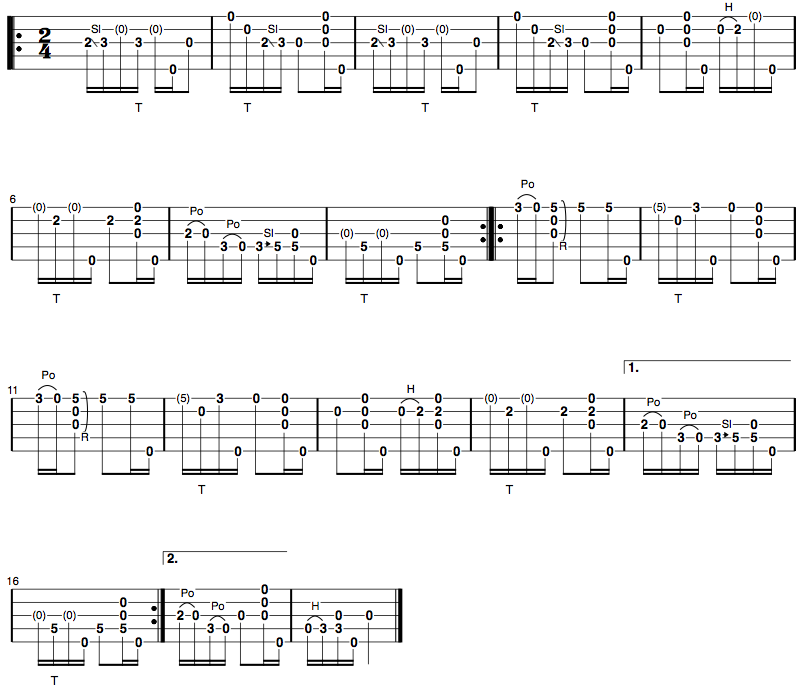Ready for another bonafide clawhammer classic?
Me too!
We have Clarence Ashley to thank for setting the world of old timey banjo enthusiasts ablaze with his rendition of “The Cuckoo” (or “Coo-Coo”) on the Anthology of American Folk Music album. It didn’t take long to secure a position as a clawhammer classic, and has since been recorded by many a musician.
As you’ll soon discover, the melody itself is spartan, which gives you plenty of room for interpretation. Ashley also puts in his own “vamping” measures between the verses, again creating more melody-free space. It’s no surprise then that, while some versions stick closely to Ashley’s iconic recording, others do not.
There are also a multitude of variations in the words people sing with it. Heck, people have even taken liberties with the name itself. I’ve seen “Cuckoo”, “Coo coo,” “Coo coo bird,” “Cacao” (or was that a chocolate?). It might as well be the Rorschach test of banjo tunes!
Here’s the Ashley version (playing starts about 3:32 into the video):
You’ll note that, while I’ve retained certain elements from the Ashley rendition – most notably the elongated brush strokes across the strings (aka the “Galax lick”, used here to evoke the sound of a bird call), I’ve definitely strayed from it as well.
I find the gourd banjo particularly well suited to syncopation, so have added a good bit of it in my version. I’ve also dropped the tuning down (the pitch relationship between the strings remains the same as in Ashley’s version) to suit the gourd.
So, as you work through this tune, feel free to explore the spaces in the melody to see what you can come up with. There’s a lot of blank canvas waiting to be painted in your own style.
Step 1: Know thy Melody
Take a listen to Ashley’s version, and listen to mine on the gourd as well. Listen for the primary notes of the melody, and the overall contour. Once you’ve got it enough to where you can hum it in your head, move along to step 2.
Step 2: Find the Melody Notes
Time to find them notes we just hummed.
Before you do so, get your banjo into “G modal” tuning – gDGCD. Time for things to get mysterious.
This is a two part tune, and one of those parts has words that can be sung. Ashley begins with the banjo solo, but I’m beginning here with the part that has words. This is what I hear as the basic melody of this tune, close to the Ashley version (what Ashley plays on the banjo isn’t the same as what he sings, so the melody tabbed here is of the vocal melody). I’m just playing through each section once here:
And here’s that melody represented in tab:
Step 3: Add Some Clawhammery Stuff
For this installment, I’m gonna do things a bit differently. Since Ashley’s version is so iconic, I’m tabbing it out here, and we’ll use that as our basic template to spring from. I think you’ll find it instructive as well to see how he chose to adapt that core melody.
Note the spots in the tune where he pauses between verses (the times in the video when Clarence isn’t singing), using those moments to make bird-call-evoking sounds from the banjo.
Here’s Ashley’s version sans singing. Remember, in his version he begins with the solo banjo part:
And here’s what it looks like in tab. Note again that what he plays while singing varies a little from the vocal melody:
Step 4: Embellish to Taste
Now that you’ve found the core melody, and you’ve seen what Ashley did with it, it’s time to get creative! One of the beauties of the banjo, and of the modal tuning, is that it’s hard to hit a wrong note, especially if you stick with just open strings. Try playing it straight ahead bum ditty, without the Galax lick. Try putting something different in the spaces.
As I said, I like to syncopate even more than usual when playing on the gourd banjo, and this tune, with all the open spaces, affords many opportunities for that. You can certainly hear similarities between what I play and the Ashley version, but I’ve certainly taken my own liberties with his version.
Here’s what my rendition (from the initial video) looks like in tab:


